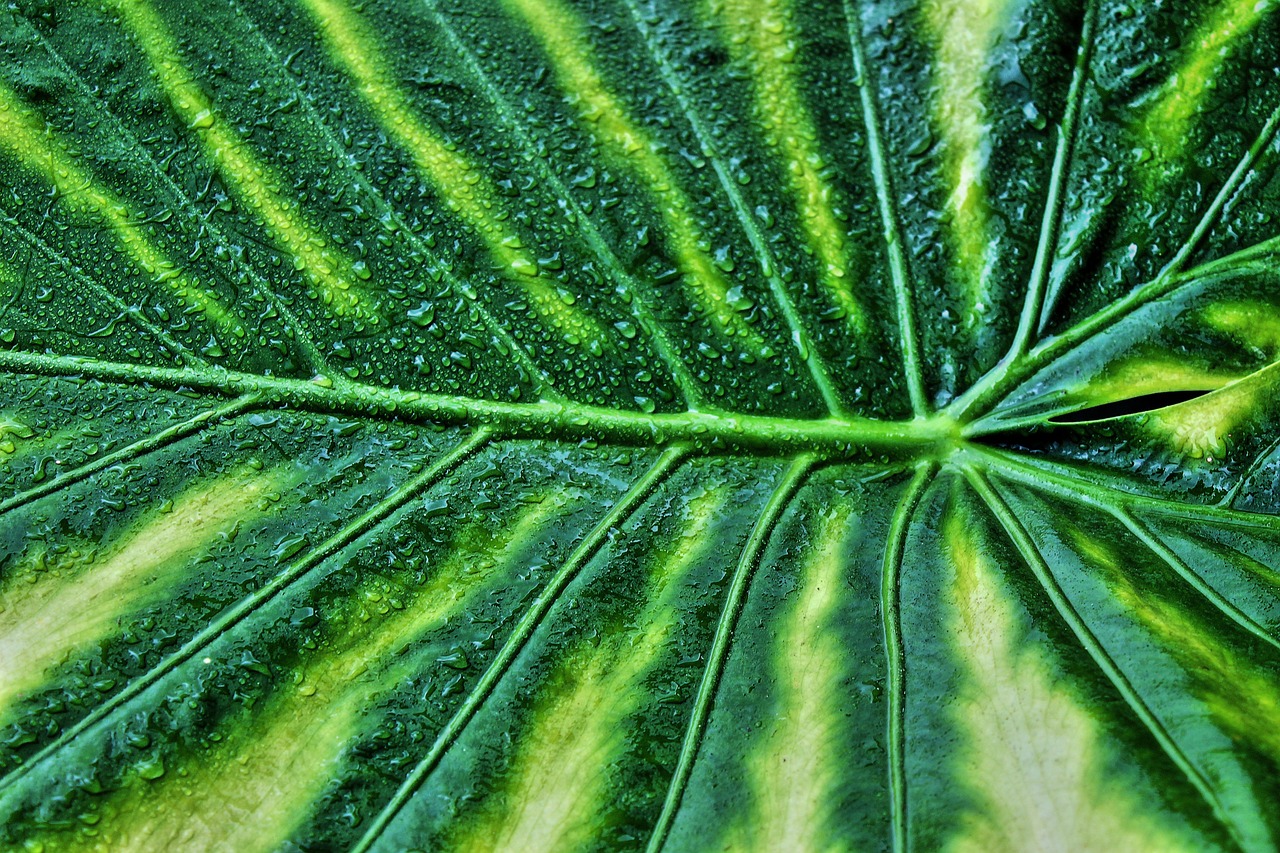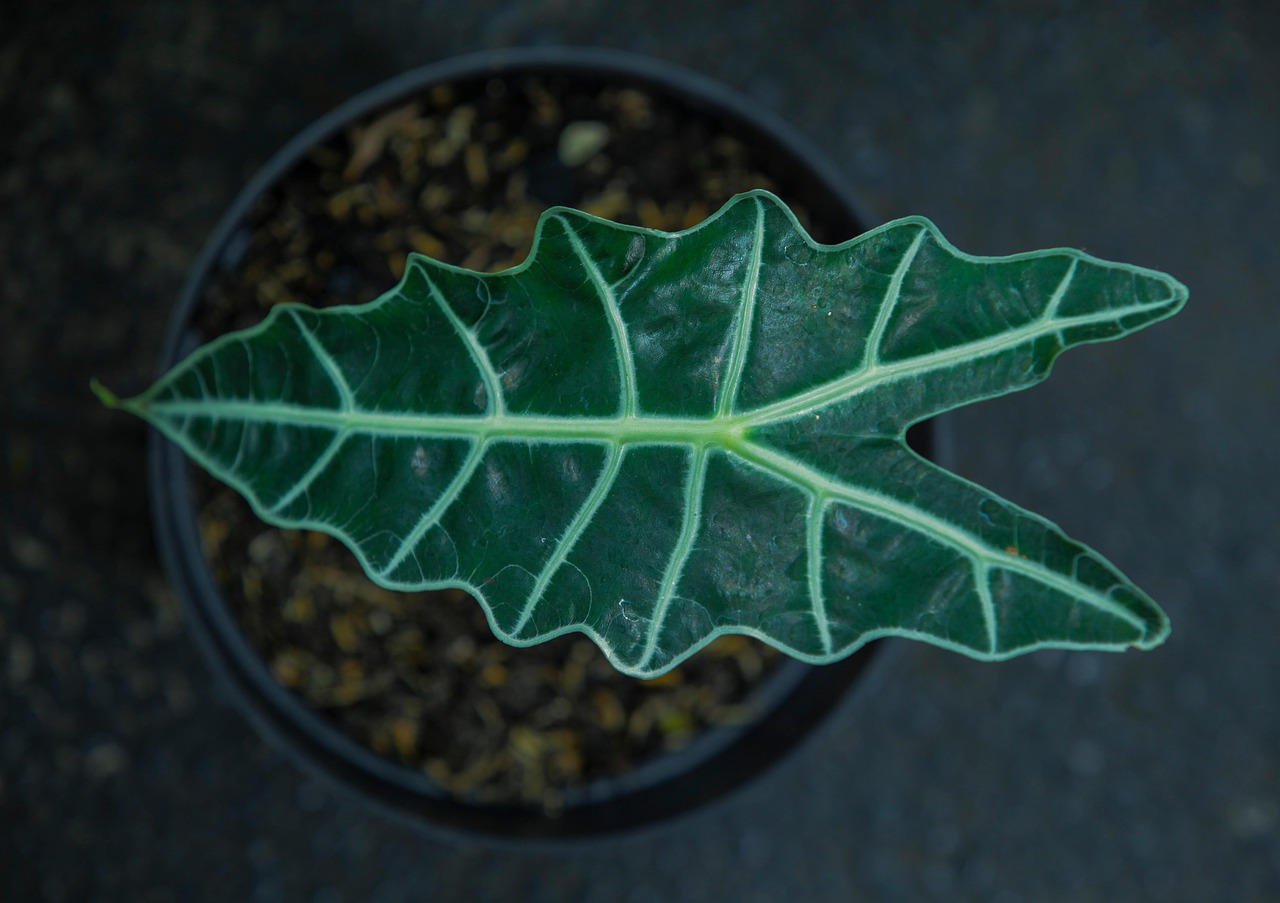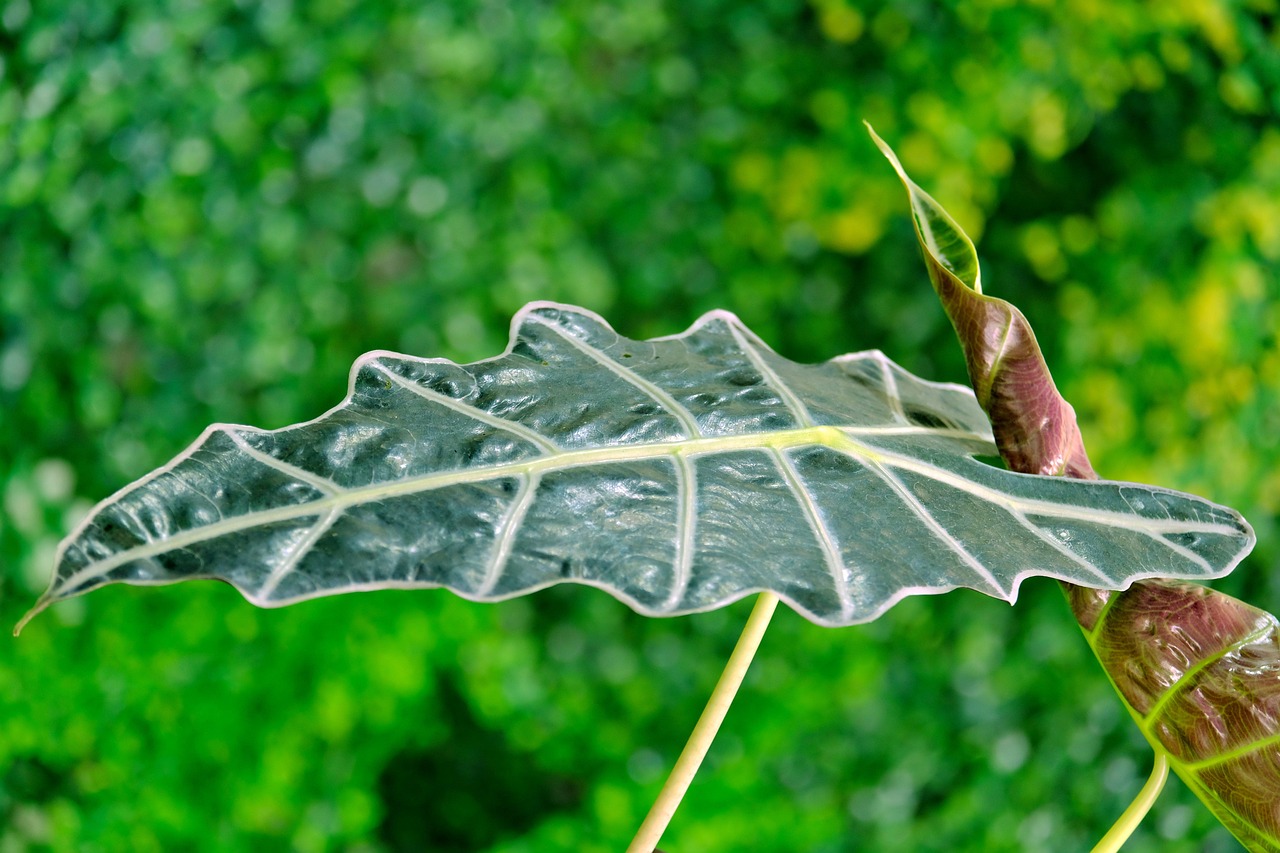To successfully maintain an Alocasia Frydek, provide bright, indirect light, high humidity, and well-draining soil. Water when the top inch of the soil feels dry, and ensure proper drainage to prevent root rot. Regularly clean the leaves to enhance photosynthesis and monitor for pests.
Understanding Alocasia Frydek

The Alocasia Frydek, also known as the Green Velvet or African Mask Plant, is a popular houseplant prized for its stunning green leaves with striking white veins. This tropical plant originates from Southeast Asia and thrives in warm, humid environments. As a member of the Araceae family, it exhibits unique characteristics that make it a favorite among indoor plant enthusiasts.
Alocasia Frydek is not only visually appealing but also relatively easy to care for if you understand its specific needs. It prefers conditions that mimic its native habitat. Achieving the right balance of light, moisture, and temperature is crucial for its growth and longevity. Without proper care, this plant may show signs of distress, such as yellowing leaves or stunted growth.
Key Care Requirements
To provide the best care for your Alocasia Frydek, consider the following essential factors:
- Light: Prefers bright, indirect sunlight. Direct sunlight can scorch the leaves.
- Water: Water when the top inch of soil is dry. Avoid overwatering.
- Humidity: Thrives in high humidity (60% or higher). Consider using a humidifier.
- Soil: Use well-draining potting mix with good aeration.
- Temperature: Ideal range is between 65°F to 80°F (18°C to 27°C).
Understanding these key requirements will significantly enhance your ability to maintain a healthy Alocasia Frydek. The plant’s sensitivity to environmental changes means that even slight variations in care can lead to noticeable effects on its health.
Light Requirements
The light conditions are one of the most critical aspects of Alocasia Frydek maintenance. This plant thrives in bright, indirect light. Too much direct sunlight can cause leaf burn, leading to unsightly brown spots. Conversely, insufficient light may result in slow growth and smaller leaves.
To achieve the right lighting conditions:
- Place your Alocasia Frydek near an east or north-facing window where it can receive filtered light.
- If natural light is limited, consider using grow lights to supplement its needs.
Watering Practices
Watering is another crucial aspect of caring for your Alocasia Frydek. This plant prefers consistently moist soil but does not tolerate standing water. Overwatering can lead to root rot, a common issue among indoor plants.
To water effectively:
- Check the soil moisture by inserting your finger into the top inch of the soil; if it feels dry, it’s time to water.
- Ensure that your pot has drainage holes to allow excess water to escape.
Humidity and Temperature Needs
Alocasia Frydek loves humidity. Ideal humidity levels range from 60% to 80%. Low humidity can cause the leaves to curl or brown at the edges. If you live in a dry climate, consider increasing humidity around the plant using a humidifier or by placing a tray of water near it.
Temperature is equally important. This plant prefers warm conditions, ideally between 65°F to 80°F (18°C to 27°C). Protect it from cold drafts and sudden temperature changes.
| Care Aspect | Ideal Condition |
|---|---|
| Light | Bright, indirect light |
| Watering | When top inch of soil is dry |
| Humidity | 60% – 80% |
| Temperature | 65°F – 80°F |
By carefully managing light, watering, humidity, and temperature, you can create an optimal environment for your Alocasia Frydek. This attention will lead to vibrant growth and a thriving plant in your home. As you continue learning about its care, you will find that maintaining this beautiful houseplant is both rewarding and enjoyable.
Soil and Potting Needs
The right soil and potting conditions are vital for the health of your Alocasia Frydek. This plant requires a well-draining potting mix that retains moisture without becoming waterlogged. A suitable soil mix will promote healthy root development and prevent issues such as root rot.
Choosing the Right Soil
When selecting soil for your Alocasia Frydek, consider the following options:
- Potting Mix: Use a high-quality indoor potting mix that contains peat moss, perlite, or vermiculite for aeration.
- Aroid Mix: An aroid mix, specifically designed for plants like Alocasia, includes ingredients such as orchid bark and charcoal.
- DIY Mix: You can create your own mix by combining equal parts of potting soil, perlite, and orchid bark.
A well-balanced mix allows for proper drainage while retaining enough moisture to meet the needs of your Alocasia Frydek.
Pot Selection
The choice of pot is just as important as the soil. A proper pot will facilitate drainage and provide ample space for root growth. Keep these points in mind when selecting a pot:
- Drainage Holes: Ensure the pot has drainage holes to allow excess water to escape.
- Size: Choose a pot that is slightly larger than the current one. A pot that is too large can retain too much moisture.
- Material: Terracotta pots are popular as they are porous and help with moisture control, but plastic pots can also work well if they have drainage features.
Fertilizing Alocasia Frydek
Fertilizing your Alocasia Frydek is essential for promoting growth and maintaining vibrant foliage. However, it’s crucial to avoid over-fertilization, which can lead to salt buildup and damage the roots.
When to Fertilize
During the growing season, typically from spring to early fall, your Alocasia Frydek will benefit from regular feeding. Here are some guidelines:
- Frequency: Fertilize every 4 to 6 weeks during the growing season.
- Type of Fertilizer: Use a balanced, water-soluble fertilizer with an NPK ratio of 20-20-20 or a fertilizer specifically formulated for houseplants.
- Dilution: Always dilute the fertilizer to half the recommended strength to prevent root burn.
Signs of Nutrient Deficiency
If your Alocasia Frydek is not receiving adequate nutrients, it may show signs of deficiency. Keep an eye out for the following symptoms:
- Pale or Yellowing Leaves: This can indicate nitrogen deficiency.
- Brown Leaf Edges: Often a sign of potassium deficiency or improper watering.
- Slow Growth: May suggest a lack of essential nutrients.
Pest Management
Like many houseplants, Alocasia Frydek can attract pests. Being proactive in pest management will help ensure your plant remains healthy and thriving. Common pests include spider mites, aphids, and mealybugs.
Preventive Measures
To reduce the risk of pest infestations, consider these preventive strategies:
- Regular Inspections: Check your plant weekly for any signs of pests or damage.
- Keep Leaves Clean: Wipe the leaves with a damp cloth to remove dust and debris that may attract pests.
- Avoid Overcrowding: Ensure plants have enough space to promote air circulation.
Treatment Options
If you discover pests on your Alocasia Frydek, prompt action is necessary:
- Insecticidal Soap: Use insecticidal soap or neem oil to treat minor infestations.
- Manual Removal: For larger pests, manually remove them using a cotton swab dipped in alcohol.
- Isolation: If an infestation is severe, isolate the affected plant to prevent spreading.
Taking these steps will help maintain a healthy environment for your Alocasia Frydek and increase its chances of thriving as a beautiful addition to your home. Understanding its specific needs regarding soil, fertilization, and pest management will contribute significantly to its overall success in your care.
Repottin

g Your Alocasia Frydek
Repotting is an essential part of maintaining your Alocasia Frydek. Over time, plants can outgrow their pots or deplete the nutrients in the soil. Repotting allows for fresh soil and more space for root growth, which can significantly enhance the plant’s health and vitality.
When to Repot
Knowing when to repot your Alocasia Frydek is key. Look for the following signs:
- Root Bound: If roots are growing out of the drainage holes or circling the pot, it’s time to repot.
- Soil Depletion: If the soil dries out quickly after watering or appears compacted, consider repotting.
- Growth Stagnation: If growth has slowed significantly, it may need more space for root expansion.
How to Repot
Repotting your Alocasia Frydek can be done effectively by following these steps:
- Select a New Pot: Choose a pot that is 1 to 2 inches larger in diameter than the current one. Ensure it has drainage holes.
- Prepare the New Soil: Use a fresh, well-draining potting mix suitable for Alocasia.
- Remove the Plant: Gently take the plant out of its current pot. You may need to tap the sides or squeeze the pot slightly to loosen the soil.
- Inspect the Roots: Check for any dead or rotten roots and trim them off with clean scissors.
- Place in New Pot: Position the plant in the center of the new pot and fill with fresh soil, making sure not to bury the stem.
- Water Thoroughly: Water the plant well after repotting to help settle the soil and remove any air pockets.
Seasonal Care for Alocasia Frydek
Understan

ding seasonal changes is important for optimal care of your Alocasia Frydek. Each season brings different needs and challenges for your plant.
Spring and Summer Care
During spring and summer, your Alocasia Frydek will be in its active growth phase. Here are some tips for seasonal care:
- Increase Watering: As temperatures rise, increase watering frequency, ensuring the soil remains moist but not soggy.
- Fertilize Regularly: Follow the fertilizing schedule mentioned earlier to support growth.
- Monitor for Pests: Keep an eye out for pests, as they may become more active during warmer months.
Fall and Winter Care
As temperatures drop in fall and winter, your Alocasia Frydek will enter a dormant period. Adjust your care routine accordingly:
- Reduce Watering: Allow the top inch of soil to dry out between waterings. Overwatering during this time can lead to root rot.
- Avoid Fertilizing: Hold off on fertilizing during the dormant period as the plant’s growth slows.
- Maintain Humidity: Use a humidifier or mist the leaves occasionally to maintain humidity levels, especially if indoor heating is used.
Common Issues and Troubleshooting
Your Alocasia Frydek may experience some common issues despite your best efforts. Identifying these problems early can help you take corrective action before they escalate.
Yellowing Leaves
If you notice yellowing leaves, it could be due to several factors:
- Overwatering: Check if the soil is soggy. Adjust your watering schedule accordingly.
- Nutrient Deficiency: Consider fertilizing if you haven’t done so recently.
- Pests: Inspect for signs of pests that may be damaging the leaves.
Curling Leaves
Curling leaves can indicate stress. Possible causes include:
- Low Humidity: Increase humidity around the plant if you suspect this issue.
- Temperature Fluctuations: Ensure your plant is not exposed to cold drafts or sudden temperature changes.
Browning Leaf Tips
Browning leaf tips are often a sign of environmental stress:
- Underwatering: Ensure you are watering adequately while allowing proper drainage.
- Nutrient Imbalance: Consider checking your fertilization routine for deficiencies or excesses.
Taking proactive measures against common issues will help maintain a healthy and thriving Alocasia Frydek in your home. Being attentive to its needs through all seasons ensures that this beautiful plant continues to flourish as a centerpiece in your indoor garden.
Additional Tips for Success
In addition t

o the maintenance tips and troubleshooting advice already discussed, there are several other strategies to ensure that your Alocasia Frydek thrives in your care. Understanding these additional aspects will enhance your overall plant care routine.
Propagation Techniques
Propagation can be a rewarding way to expand your collection of Alocasia Frydek or share with friends. The most common method is through division.
- Timing: The best time to propagate is during the spring or early summer when the plant is actively growing.
- Steps:
- Gently remove the plant from its pot.
- Carefully separate the rhizomes, ensuring each section has roots and at least one leaf.
- Replant the divisions into individual pots with fresh, well-draining soil.
- Water thoroughly and place in a warm, humid environment until established.
Seasonal Adjustments
As mentioned earlier, adjusting care based on the seasons is crucial. Beyond watering and fertilizing, consider the following:
- Lighting Adjustments: During winter months, you may need to move your plant closer to a light source as natural light diminishes.
- Humidity Management: In colder months, indoor heating can dry the air. Regular misting or using a pebble tray with water can help maintain humidity levels.
Choosing Companion Plants
When considering companion plants for your Alocasia Frydek, opt for those with similar care requirements. Good companions can help create an attractive indoor garden while maintaining a suitable environment for all your plants.
- Pothos: This hardy plant thrives in similar conditions and can tolerate varying light levels.
- Ferns: Many ferns enjoy high humidity and can complement your Alocasia’s aesthetic.
- Calathea: Known for their striking foliage, Calatheas prefer similar humidity and light conditions.
Final Thoughts
Caring for an Alocasia Frydek can be an immensely rewarding experience. With its unique foliage and elegant presence, this plant adds a touch of tropical flair to any indoor space. By understanding and addressing its specific needs regarding light, water, humidity, and soil, you can create an environment where it thrives.
Remember to monitor your plant regularly for signs of stress or pests, and be attentive to seasonal changes that may affect its care. Repotting when necessary and considering propagation can also contribute to the success of your Alocasia Frydek journey.
Ultimately, patience and observation are key. Every plant is unique, and learning how your Alocasia Frydek responds to its environment will help you become a more skilled plant caregiver. Enjoy the process of nurturing this beautiful plant, and watch as it flourishes under your care.
With these guidelines and insights, you are now equipped to ensure that your Alocasia Frydek not only survives but thrives in your home. Happy planting!
